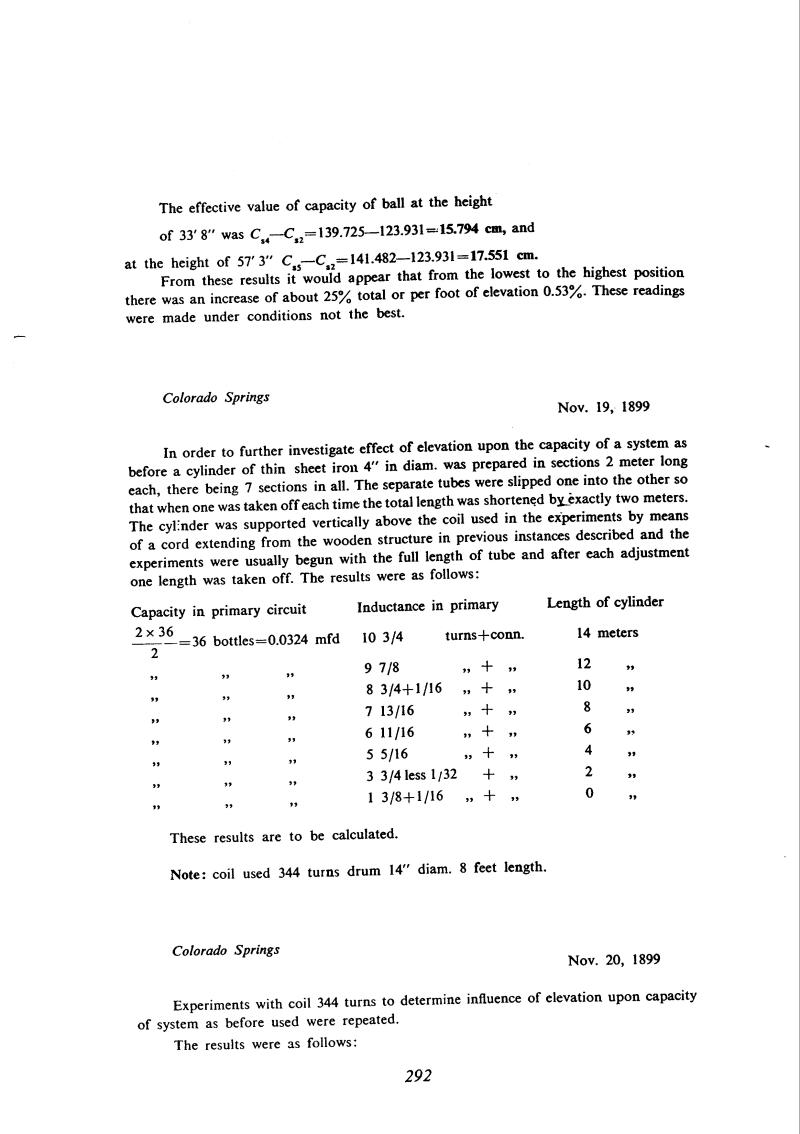
Nikola Tesla Books
The effective value of capacity of ball at the height of 33' 8" was Cs4 - Cs2 = 139.725 - 123.931 = 15.794 cm, and at the height of 57' 3" Cs5 - Cs2 = 141.482 - 123.931 = 17.551 cm.
From these results it would appear that from the lowest to the highest position there was an increase of about 25% total or per foot of elevation 0.53%. These readings were made under conditions not the best.
Colorado Springs
Nov. 19, 1899
In order to further investigate effect of elevation upon the capacity of a system as before a cylinder of thin sheet iron 4" in diam. was prepared in sections 2 meter long each, there being 7 sections in all. The separate tubes were slipped one into the other so that when one was taken off each time the total length was shortened by exactly two meters. The cylinder was supported vertically above the coil used in the experiments by means of a cord extending from the wooden structure in previous instances described and the experiments were usually begun with the full length of tube and after each adjustment one length was taken off. The results were as follows:
| Capacity in primary circuit | Inductance in primary | Length of cylinder |
|---|---|---|
| $! {{2 \times 36} \over 2} $! = 36 bottles = 0.0324 mfd | 10 3/4 turns + conn. | 14 meters |
| " " " | 9 7/8 " + " | 12 " |
| " " " | 8 3/4 + 1/16 " + " | 10 " |
| " " " | 7 13/16 " + " | 8 " |
| " " " | 6 11/16 " + " | 6 " |
| " " " | 5 5/16 " + " | 4 " |
| " " " | 3 3/4 less 1/32 + " | 2 " |
| " " " | 1 3/8 + 1/16 " + " | 0 " |
These results are to be calculated.
Note: coil used 344 turns drum 14" diam. 8 feet length.
Colorado Springs
Nov. 20, 1899
Experiments with coil 344 turns to determine influence of elevation upon capacity of system as before used were repeated.
The results were as follows:
292

